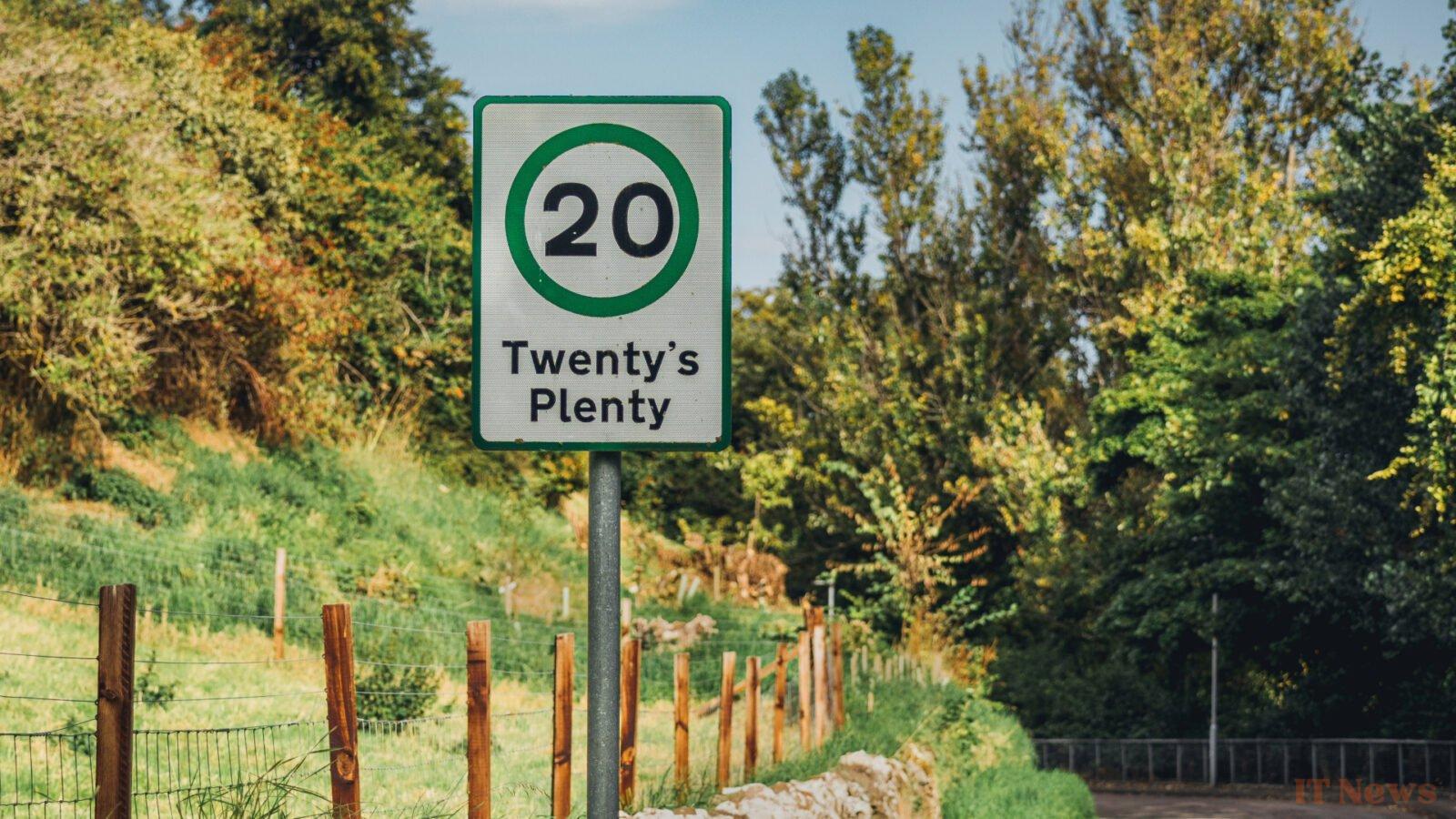These signs, which have a green border, are different from the traditional speed limit signs we know in France. So, what do they mean for drivers across the Channel, and what attitude should we adopt when faced with them?
A sign of recommendation rather than obligation
Unlike traditional speed limit signs, which also have a red border in the United Kingdom, these new green signs have no regulatory value per se. They do not indicate a maximum speed that should not be exceeded under penalty of a fine, but rather a recommended speed for driving in good safety conditions.
So, when a driver sees a green sign indicating a speed limit, for example "30", this means that it is recommended to drive at this speed, but that it is not obligatory to comply with it. This is called an "advisory speed limit" as opposed to the "regulatory speed limit" of red signs.
These green signs are intended to encourage drivers to reduce their speed, particularly in high-risk areas such as near schools or in areas with high pedestrian traffic. The goal is to raise awareness and encourage them to drive more cautiously, without formally forcing them to do so. Moreover, the sign is sometimes accompanied by the warning "advisory speed limit" written just below. A red sign with the maximum authorized speed is often placed in a location near or just above the green sign. Be careful though if you are traveling through the United Kingdom: remember that the number on the sign expresses miles per hour, not kilometers!
The equivalent of the sign in France
The round sign with the green border does not exist in France, but we have a sign at home that expresses the same idea. This is the C4a sign, which also indicates a recommended speed but not a speed limit. The sign is square with a blue background and bordered by a white edge. The number indicating the recommended speed is also written in white.
Like its English counterpart, it indicates the recommended speed at which users should travel. The sign was established by the decree of November 24, 1967, relating to road and motorway signs. According to this decree, the sign “indicates the speed at which it is recommended to travel if circumstances permit and if the user is not required to respect a lower speed specific to the category of vehicle they are driving.
In all circumstances, the user must remain in control of their speed, in accordance with Article R. 413-17 of the Highway Code.” It is therefore an indication sign and not a prohibition sign (round signs with red borders), nor an obligation sign (round signs with a blue background). The end of the recommended speed limit can be indicated by the C4b sign, identical to the C4a but with a diagonal red bar.
Warning: this sign should not be confused with the B25 sign, which prohibits users from traveling at a speed lower than the speed indicated. It is also a blue sign, but it is round and therefore indicates an obligation. The B25 sign is mainly used in tunnels and on motorways to avoid potentially dangerous slowdowns. Indeed, according to Article R.413-19 of the Highway Code, “No driver may hinder the normal movement of other vehicles by traveling at an abnormally low speed without a valid reason.”
Failure to respect the speed limit: what are the risks?
If you ever travel through the United Kingdom, here is a brief summary of the speed limits to respect depending on the roads you are on:
In built-up areas, the speed limit is generally 30 mph (approximately 48 km/h). On single-lane roads, it is 60 mph (about 97 km/h), and on dual carriageways, 70 mph (about 113 km/h). The speed limit of 97 km/h on rural roads is relatively high, but in practice, motorists rarely reach it. Fines for exceeding the speed limit start at 100 pounds sterling, or 120 euros.
In France, speeding under 20 km/h when the speed limit is over 50 km/h results in a fine of 68 euros and the loss of one point on your driving licence. If the speed limit is 50 km/h or less, the fine increases to 135 euros.
Speeding at 20 km/h or more but less than 30 km/h results in a fine of €135 and 2 points deducted from your license. If the speed is at 30 km/h or more but less than 40 km/h, 3 points are deducted. From 40 km/h to 50 km/h (not included), 4 points are deducted. For 50 km/h or more, the driver is liable to a fine of €1,500 and 6 points deducted. Serious offenses can also result in a 3-year license suspension, a road safety awareness course, and even vehicle confiscation. So stay vigilant and watch for signs, whether you're in France or traveling across the Channel!



0 Comments